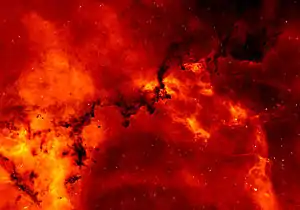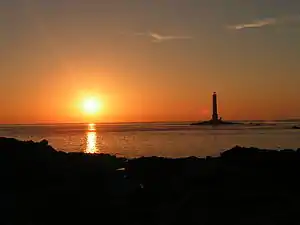

Hydrogen is an atom that contains an electron and a single proton. It is found at the very upper left of the periodic chart. The symbol for Hydrogen is the letter H. Hydrogen is both the lightest and most abundant element in the universe. Here are some data:
- Name: Hydrogen
- Symbol: H
- Atomic Number: 1
- Atomic Mass: 1.00794 amu
- Melting Point: -259.14 °C (14.009985 K, -434.45203 °F)
- Boiling Point: -252.87 °C (20.280005 K, -423.166 °F)
- Number of Protons and Electrons (same number): 1
- Number of Neutrons: 0
- Classification: Non-metal
- Color: colorless
What does it look, feel, taste, or smell like?

Hydrogen is the absolute smallest of all elements, so small that four billion, laid end to end, could fit on the head of one pin! At room temperature, hydrogen is a clear gas. Hydrogen gas (H2) is a molecule made of two hydrogen atoms bonded together. It has no taste or odor and is not toxic. It takes a very, very low temperature and/or very high pressure to turn hydrogen into a liquid or a solid. One common molecule formed by hydrogen is water, or scientifically known as H2O. It has two hydrogen atoms and one oxygen atom. At room temperature, water is a clear liquid.
How was it discovered?
Henry Cavendish was the first to understand that hydrogen was a unique substance. In 1776 he produced hydrogen by mixing mercury with an acid. Hydrogen had actually been produced much earlier by the Swiss alchemist Paracelsus. He also added mixes of water samples in it to make water!
Where did its name come from?
Hydrogen comes from Hydrogenes, which comes from Ancient Greek meaning "water-forming". The element was named by Antoine Lavoisier in 1783. When hydrogen burns, it produces water.
Did You Know?
- Hydrogen is the smallest element.
- Hydrogen is the most abundant element in the universe.
- Hydrogen isn't common in a pure form on Earth, but is mostly found as part of water.
- Hydrogen is the main fuel of stars and the only fuel for red dwarfs.
- Hydrogen makes a squeaking noise when it is set on fire.
Where is it found?
Hydrogen in its atomic form is found commonly in space and stars. There are vast clouds of hydrogen in outer space. However much of the hydrogen in space is missing an electron, which means it is an ion. On Earth, hydrogen is commonly found as part of water molecules. Many other molecules also contain hydrogen. Some bacteria produce pure hydrogen gas as waste.

Hydrogen is very important for all living creatures including people to exist. It is found in every living thing on Earth, and also forms the oceans, rivers, lakes and clouds.
Hydrogen gas is most of the atmosphere of the gas-giant planets Jupiter, Saturn, Uranus, and Neptune, planets with much stronger gravity and lower temperatures than Earth.
What are its uses?
The largest application of hydrogen is for the processing ("upgrading") of fossil fuels, and in the production of ammonia. Hydrogen can be used as a fuel source. A fuel cell is a device that produces electricity by safely combining hydrogen and oxygen.
In the future, non-polluting cars may be fueled by hydrogen. The technology to make a hydrogen car already exists, but there are reasons you don't see them on the road. Separating hydrogen from water takes energy. The energy needed to produce enough hydrogen to power a car can cause pollution. Also, it's hard to carry enough hydrogen to power a vehicle for a long trip.
Stars give off light and heat because of the energy made when hydrogen atoms are merged (or fused) together to form heavier elements. Scientists are working to create a reactor that can make energy in the same way. This, however, is a very hard problem to solve and will take many years before we see useful fusion reactors built.
Is it dangerous?
Elemental hydrogen is highly flammable, and when it is mixed with oxygen gas or with air it can explode.